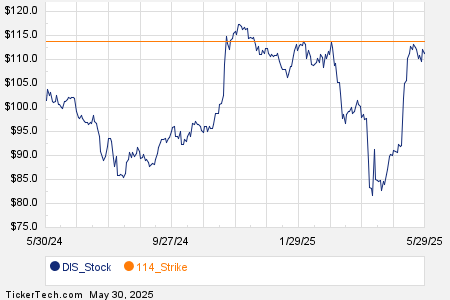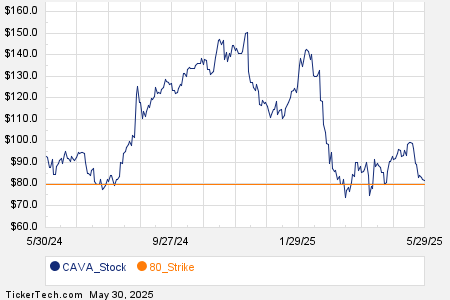CalPERS Portfolio Offers Key Insights for Investors in March
Data is crucial for investors, and consistent updates are abundant on Wall Street. With earnings reports and U.S. economic releases, investors have numerous sources to analyze.
May 15 marked a significant date for data release.
No later than 45 days after each quarter ends, institutional investors managing over $100 million must file Form 13F with the SEC. This form provides insights into which stocks, ETFs, and select options these prominent money managers are trading. It helps investors identify trends and interests among major investors.

Image source: Getty Images.
Additionally, it’s critical to understand the investment strategies of large funds beyond just notable figures like Warren Buffett. The California Public Employees’ Retirement System (CalPERS), managing over $500 billion for more than 2 million members, diversifies its portfolio across various asset classes, including fixed income, private equity, and public equities.
CalPERS Invests in Major U.S. Companies
As of the end of March, CalPERS’ 13F filing revealed approximately $143.1 billion in assets. Despite owning over 1,100 securities, only 14 constituted 1% or more of total assets.
Notably, many leading positions include influential U.S. businesses. Eight of the ten public companies valued over $1 trillion are in this group, missing only Tesla and Taiwan Semiconductor Manufacturing.
For instance, Apple (NASDAQ: AAPL) ranks as CalPERS’ second-largest holding, representing 5.4% of its portfolio. The fund held approximately 34.66 million shares worth nearly $7.7 billion at the end of March. Despite declining growth rates, Apple continues to generate significant cash flow from its iPhone and services division.
Similarly, Nvidia (NASDAQ: NVDA) is the fourth-largest holding, accounting for 4.4% of invested assets. Nvidia’s technologies are pivotal for generative AI, a sector projected to add $15.7 trillion to the global economy by 2030.
CalPERS’ investments in these prominent companies highlight their importance to sustained economic success.
Top Holding Consistently Delivers for CalPERS
Interestingly, the largest asset within CalPERS’ $143.1 billion portfolio is the Vanguard S&P 500 ETF (NYSEMKT: VOO), which represents 7.9% of invested assets.
ETFs offer a straightforward way to achieve diversification efficiently. The Vanguard S&P 500 ETF aims to mirror the S&P 500’s performance, simplifying investment in multiple securities.
Investors typically incur net expense ratios when utilizing ETFs, covering operational costs. Generally, funds with higher turnover have higher ratios.
The two largest S&P 500 ETFs by assets are the Vanguard S&P 500 ETF and the SPDR S&P 500 ETF Trust (NYSEMKT: SPY), the first ETF listed on a national exchange.
While both ETFs aim to replicate the S&P 500 returns, they differ in expense ratios. The SPDR S&P 500 ETF Trust has a low net expense ratio of 0.09%, translating to $0.90 in fees per $1,000 invested. In contrast, the Vanguard S&P 500 ETF has a notably lower net expense ratio of 0.03%.
# Vanguard S&P 500 ETF Shows Strong Long-Term Returns
## Historical Performance of the S&P 500
The Vanguard S&P 500 ETF offers a unique advantage with its consistent long-term returns. Analysts cannot predict stock market movements with total certainty, but S&P 500 tracking indexes, like this ETF, provide a nearly guaranteed investment.
Crestmont Research updates a data set each year tracking the S&P 500’s 20-year rolling returns, including dividends, dating back to 1900. Although the S&P 500 was officially established in 1923, its component performance has been available from earlier indexes. This created 106 rolling 20-year periods from 1900 to 2005 for analysis.
Remarkably, every one of these 106 periods yielded a positive annualized return. Investors purchasing an S&P 500 index at any point from 1900 to 2005 would have gained wealth after a 20-year hold, regardless of market conditions, including recessions, depressions, wars, or pandemics.
No stock market investment has exhibited the long-term reliability of S&P 500 index funds, with the Vanguard S&P 500 ETF featuring the lowest net expense ratio among similar ETFs.
## Should You Invest $1,000 in Vanguard S&P 500 ETF Now?
Before investing in the Vanguard S&P 500 ETF, consider this insight: the Motley Fool’s Stock Advisor analyst team has identified ten top investment stocks that exclude this ETF. They believe these alternatives could yield significant returns in the upcoming years.
Historical examples emphasize this point. When Netflix was selected on December 17, 2004, a $1,000 investment would be worth $653,389 today. Similarly, a $1,000 investment in Nvidia from April 15, 2005, would amount to $830,492.
It’s essential to note that the Stock Advisor’s average total return stands at 982%, surpassing the S&P 500’s 171% return.
*The views and opinions expressed herein are those of the author and do not necessarily reflect those of Nasdaq, Inc.*





